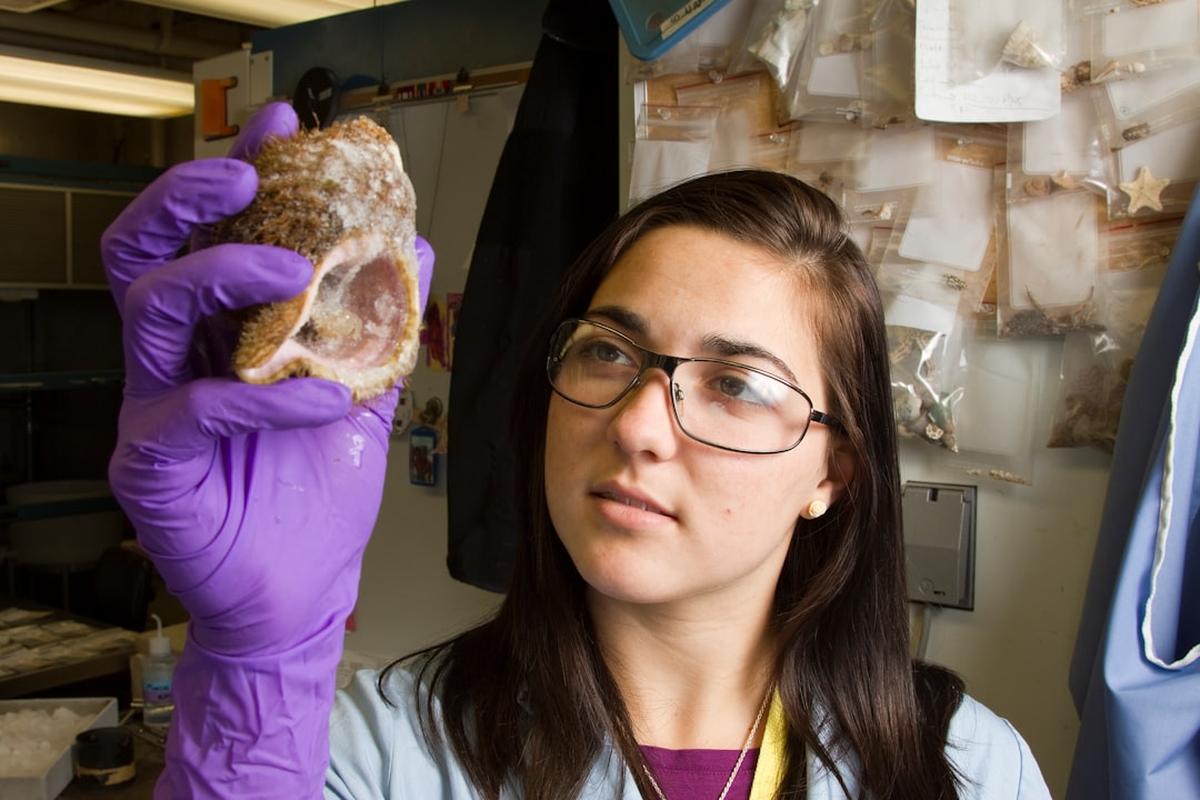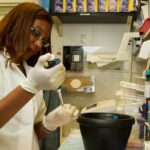Brief Overview of DNA-Binding Drugs
In the intricate world of pharmacology, DNA-binding drugs stand as a unique class of therapeutic agents. These drugs function by interacting directly with the DNA in our cells, a process that can influence the expression of genes and disrupt the life cycle of harmful cells. They play a crucial role in modern medicine, particularly in the treatment of cancer and certain genetic disorders.
Importance of DNA-Binding Drugs in Medicine
The significance of DNA-binding drugs in medicine cannot be overstated. Their ability to interact with the very building blocks of life allows them to target disease at its most fundamental level. By understanding and harnessing the power of these drugs, we can develop more effective treatments and potentially cure diseases that were once considered untreatable.
The Science Behind DNA-Binding Drugs
Explanation of DNA Structure
DNA, or deoxyribonucleic acid, is a molecule that carries the genetic instructions for the development, functioning, growth, and reproduction of all known organisms. It is composed of two strands that wind around each other to form a double helix, with each strand made up of a long chain of nucleotides. The sequence of these nucleotides determines the genetic information carried by the DNA.
How Drugs Interact with DNA
DNA-binding drugs interact with DNA in various ways. Some bind to the minor or major grooves of the DNA helix, altering its shape and interfering with its function. Others intercalate between the base pairs of the DNA, disrupting its structure and preventing it from being properly read by the cell’s machinery. Still, others covalently bind to the DNA, causing direct damage to its structure.
The Role of Endocytosis in Drug Uptake
Endocytosis is a cellular process that allows cells to take in substances from their environment. This process plays a crucial role in the uptake of DNA-binding drugs. Once these drugs have entered the cell, they can interact with the DNA and exert their therapeutic effects.
Examples of DNA-Binding Drugs
Mechlorethamine: Mechanism and Uses
Mechlorethamine, also known as nitrogen mustard, is a type of DNA-binding drug used in cancer treatment. It works by forming covalent bonds with the DNA, causing cross-links that prevent the DNA from being properly replicated. This disrupts the life cycle of the cancer cells and leads to their death.
Doxorubicin: Mechanism and Uses
Doxorubicin is another DNA-binding drug commonly used in cancer treatment. It intercalates between the base pairs of the DNA, disrupting its structure and preventing it from being properly read by the cell’s machinery. This leads to the death of the cancer cells.
Mitomycin C: Mechanism and Uses
Mitomycin C is a DNA-binding drug that works by covalently binding to the DNA and causing cross-links. This prevents the DNA from being properly replicated, leading to the death of the cancer cells. Mitomycin C is used in the treatment of various types of cancer, including stomach and pancreatic cancer.
The Process of Cell Necrosis
Understanding Cell Necrosis
Cell necrosis is a form of cell death that occurs when cells are exposed to extreme conditions or damaging agents, such as DNA-binding drugs. It is characterized by the swelling of the cell, the rupture of the cell membrane, and the subsequent release of the cell’s contents into the surrounding tissue.
How DNA-Binding Drugs Initiate Cell Necrosis
DNA-binding drugs can initiate cell necrosis by causing severe damage to the DNA. This damage disrupts the normal functioning of the cell and triggers a series of events that ultimately lead to the cell’s death.
The Effect of Cell Necrosis on Nearby Cells
The death of a cell through necrosis can have significant effects on nearby cells. The release of the cell’s contents into the surrounding tissue can trigger an inflammatory response, which can lead to further cell death and tissue damage.
Clinical Applications of DNA-Binding Drugs
Use in Cancer Treatment
DNA-binding drugs are widely used in the treatment of cancer. By targeting the DNA of cancer cells, these drugs can disrupt the life cycle of the cells and lead to their death. This can help to shrink tumors and prevent the spread of cancer in the body.
Use in Genetic Disorders
Some DNA-binding drugs are also used in the treatment of genetic disorders. These drugs can interact with the DNA to correct genetic defects or to modulate the expression of certain genes.
Other Medical Applications
In addition to their use in cancer treatment and genetic disorders, DNA-binding drugs are also being explored for use in other areas of medicine. For example, some researchers are investigating the use of these drugs in the treatment of viral infections, as they may be able to disrupt the replication of the viral DNA.
Potential Side Effects and Risks of DNA-Binding Drugs
Common Side Effects
Like all drugs, DNA-binding drugs can have side effects. These can vary depending on the specific drug and the individual patient, but may include nausea, vomiting, hair loss, and fatigue. In some cases, these drugs can also cause more serious side effects, such as heart damage or secondary cancers.
Long-Term Risks
The long-term risks of DNA-binding drugs are still being studied. However, it is known that these drugs can cause damage to healthy cells as well as cancer cells, which can lead to long-term health problems. For example, some DNA-binding drugs can increase the risk of developing secondary cancers later in life.
Managing Side Effects and Risks
The side effects and risks of DNA-binding drugs can often be managed with appropriate medical care. This may involve adjusting the dose of the drug, providing supportive care to manage side effects, or monitoring the patient closely for signs of long-term health problems.
Current Research and Future Developments in DNA-Binding Drugs
Recent Advances in DNA-Binding Drug Research
Recent advances in DNA-binding drug research have led to the development of new drugs with improved efficacy and reduced side effects. For example, researchers have developed new DNA-binding drugs that are more selective in their action, targeting only cancer cells and sparing healthy cells.
Potential Future Developments
The field of DNA-binding drugs is rapidly evolving, and there are many potential future developments on the horizon. These include the development of personalized DNA-binding drugs, which could be tailored to the specific genetic makeup of each patient, and the use of DNA-binding drugs in combination with other therapies to enhance their effectiveness.
The Role of DNA-Binding Drugs in Personalized Medicine
DNA-binding drugs have the potential to play a crucial role in personalized medicine. By understanding the specific genetic makeup of each patient, doctors could potentially prescribe DNA-binding drugs that are specifically tailored to target the patient’s disease. This could lead to more effective treatments with fewer side effects.
In Summary
Recap of Key Points
DNA-binding drugs are a unique class of therapeutic agents that interact directly with the DNA in our cells. They play a crucial role in modern medicine, particularly in the treatment of cancer and certain genetic disorders. However, like all drugs, they can have side effects and risks, which must be carefully managed.
Importance of Continued Research and Development
The field of DNA-binding drugs is rapidly evolving, and continued research and development is crucial. By understanding and harnessing the power of these drugs, we can develop more effective treatments and potentially cure diseases that were once considered untreatable.
Frequently Asked Questions
What are DNA-binding drugs?
DNA-binding drugs are a class of therapeutic agents that function by interacting directly with the DNA in our cells. This interaction can influence the expression of genes and disrupt the life cycle of harmful cells.
How do DNA-binding drugs work?
DNA-binding drugs work by binding to the DNA in our cells and altering its structure or function. This can disrupt the life cycle of the cells and lead to their death.
What are some examples of DNA-binding drugs?
Examples of DNA-binding drugs include mechlorethamine, doxorubicin, and mitomycin C. These drugs are commonly used in the treatment of cancer.
What are the side effects of DNA-binding drugs?
The side effects of DNA-binding drugs can vary depending on the specific drug and the individual patient, but may include nausea, vomiting, hair loss, and fatigue. In some cases, these drugs can also cause more serious side effects, such as heart damage or secondary cancers.
What is the future of DNA-binding drugs?
The field of DNA-binding drugs is rapidly evolving, with many potential future developments on the horizon. These include the development of personalized DNA-binding drugs, which could be tailored to the specific genetic makeup of each patient, and the use of DNA-binding drugs in combination with other therapies to enhance their effectiveness.
What is the role of DNA-binding drugs in personalized medicine?
DNA-binding drugs have the potential to play a crucial role in personalized medicine. By understanding the specific genetic makeup of each patient, doctors could potentially prescribe DNA-binding drugs that are specifically tailored to target the patient’s disease.
References
- Chaires, J. B. (1998). A thermodynamic signature for drug-DNA binding mode. Archives of Biochemistry and Biophysics, 360(1), 1-7.
- Kelland, L. (2007). The resurgence of platinum-based cancer chemotherapy. Nature Reviews Cancer, 7(8), 573-584.
- Nitiss, J. L. (2009). Targeting DNA topoisomerase II in cancer chemotherapy. Nature Reviews Cancer, 9(5), 338-350.
- Pommier, Y., Leo, E., Zhang, H., & Marchand, C. (2010). DNA topoisomerases and their poisoning by anticancer and antibacterial drugs. Chemistry & Biology, 17(5), 421-433.








